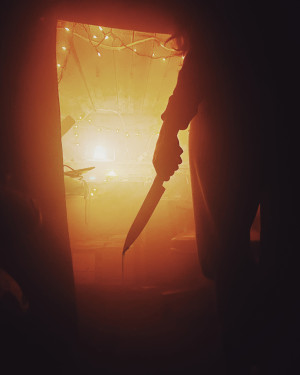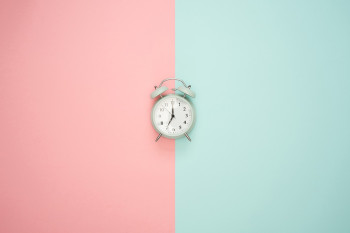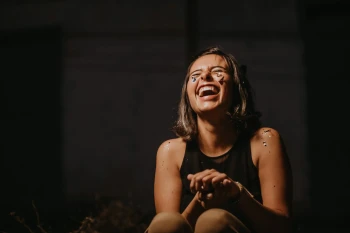© Pint of Science, 2024. All rights reserved.
Horror as a genre has long been popular for fun & entertainment, or as a way to process or psychologically prepare for unpleasant events—it has even been found that horror fans were better psychologically prepared for, and more resilient during, the COVID-19 pandemic. So, as viewers, we are drawn to psychologically disturbing fictions for various reasons, but if a horror film isn’t actually scary, it’s either unintentionally funny, or just bad. So what are some tactics that filmmakers use to make their films scarier, and what techniques are most effective, according to science?
Psychologists will often look at changes in the electrical conductivity of the skin (termed ‘electrodermal activity’) caused by emotional sweating in order to measure the fear or anxiety a person may be experiencing. When these measurements are taken while a person is watching a film clip of something scary, it gives scientists a way to measure just how scary that film is and what stimuli viewers were exposed to at the precise moment of fear, down to the millisecond. This article examines the work of Dr. Keith Bound, whose research interests lie at the intersection of film studies and media psychology, and looks at what he terms ‘psychophysiological suspense’.
Bound identifies two main tactics that filmmakers used to create the experience of suspense (and thus, fear) in the film clips studied: the strategic concealment or disclosure of plot-relevant information through use of lighting and sound, and the foregrounding of the protagonist’s mental and emotional state in order to foster empathy from the viewer.

Photo by Kyle Johnson
Scenes that were lit in such a way as to conceal potential dangers from view in the shadows, followed by the sudden exposure of threats in harsh lighting were found to be effective at inducing prolonged anxiety responses at a high intensity, as measured by electrodes on the skin. Providing the ‘correct’ balance of information about a potential threat in this way was also necessary – too little or too much information did not create the same effect. Similarly, the use of sound to indicate the location of a threat but not necessarily its exact nature (before its visual appearance on screen) was also an effective technique for inducing fear.
Cinematographic techniques such as extreme close-ups of characters’ faces were used to emphasise facial expressions and highlight negative emotions, thus inducing empathy – at least when the actors’ performances were judged to be robust, this created anxiety in viewers. Use of the human voice was effective too, especially when vocalisations had an upshift in pitch – this has been found to increase physiological arousal as these kinds of noises correspond to sounds made when mammals are suddenly frightened, adding to a general ambience of fear.
Interestingly, the way the spatial relationship between the protagonist/victim and the threat was presented was also found to be important – when shown together in the same frame, anxiety increased significantly due to an increase in perceived danger.
Techniques used in combination were found to be most effective, including use of situations where the viewer had more information than the protagonist. Scenes of conflict between protagonist and antagonist were commonly found to induce anxiety, where the suspense was drawn from the outcome being unpredictable.
So, bearing in mind that exposure to scary stimuli in a ‘safe’ environment might actually be psychologically healthy, next time Halloween comes around and you sit down to a scary movie, perhaps you will stop and think about how cinematographic techniques are being used to manipulate your emotions, and how much you might be emotionally sweating.
********
Featured photo by Pedro Figueras from Pexels




